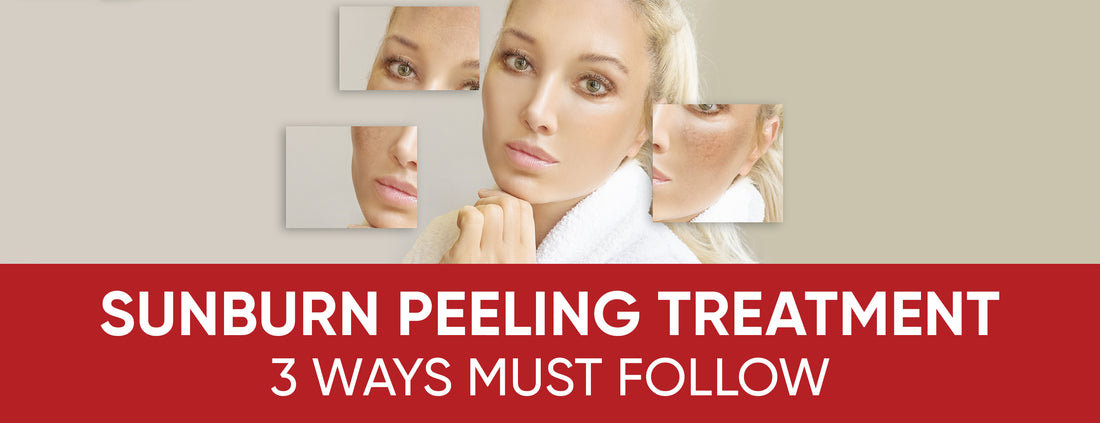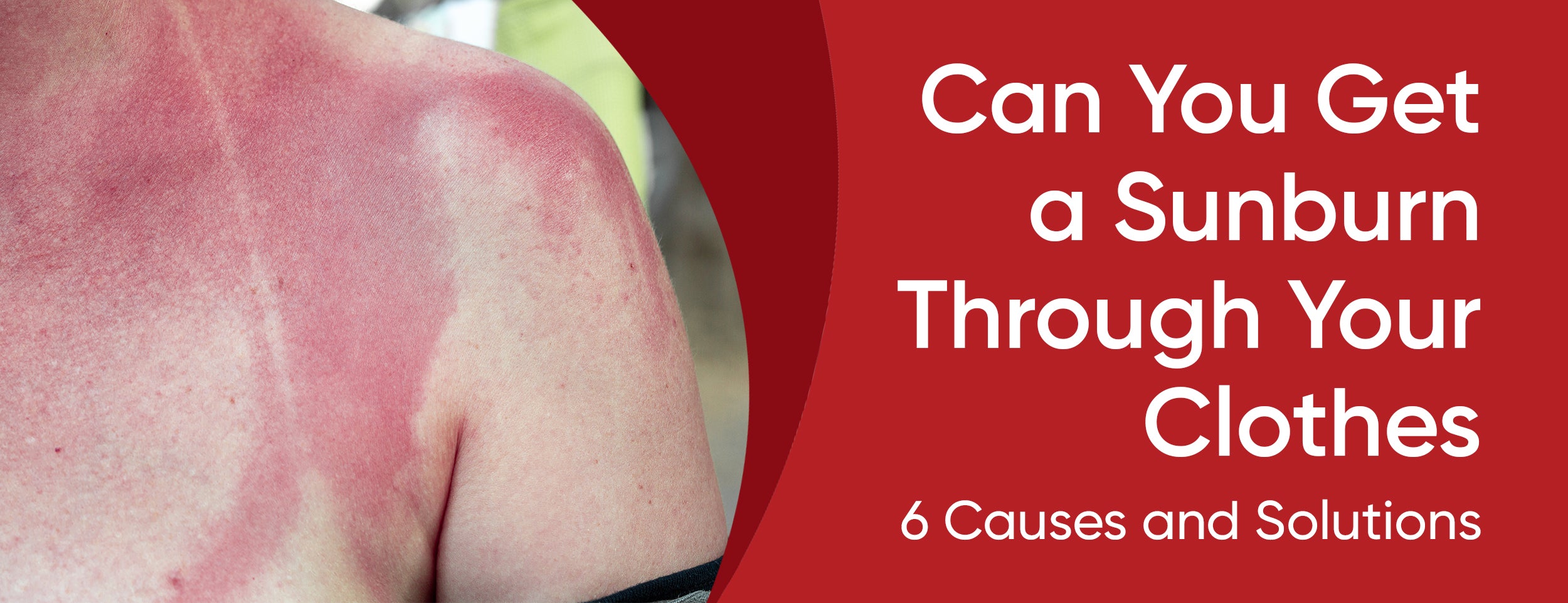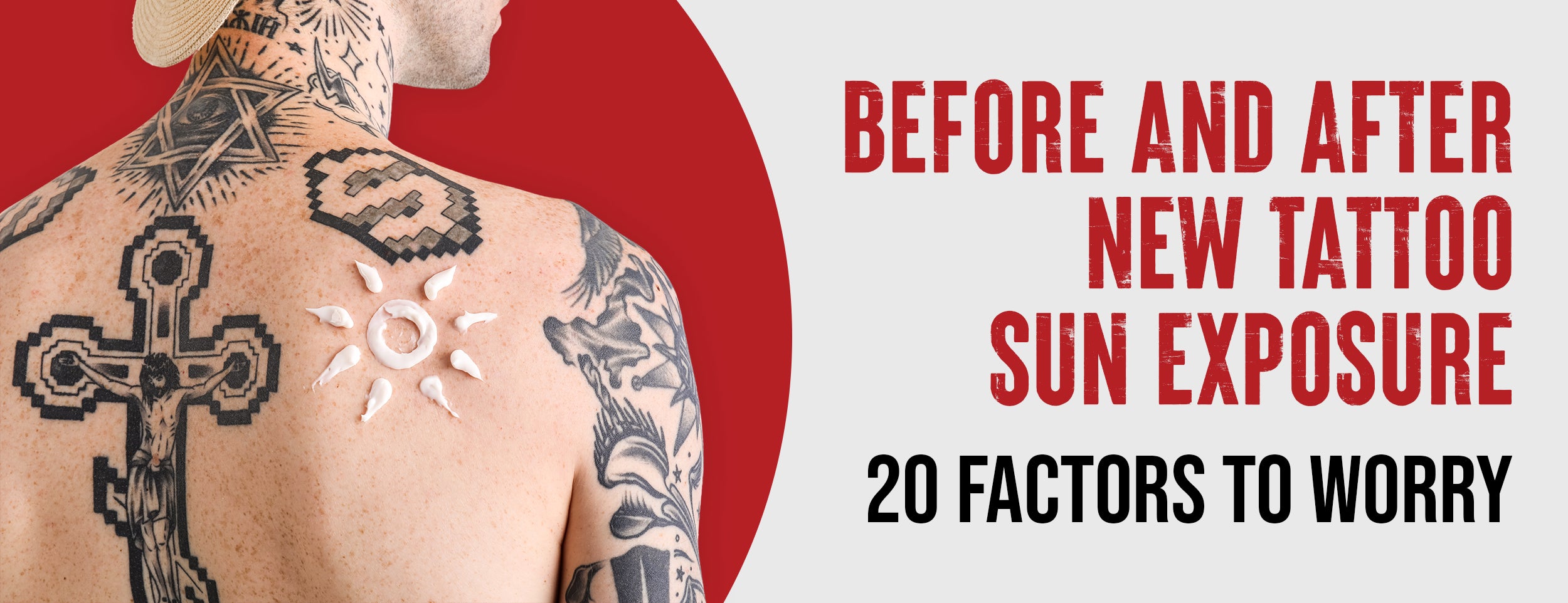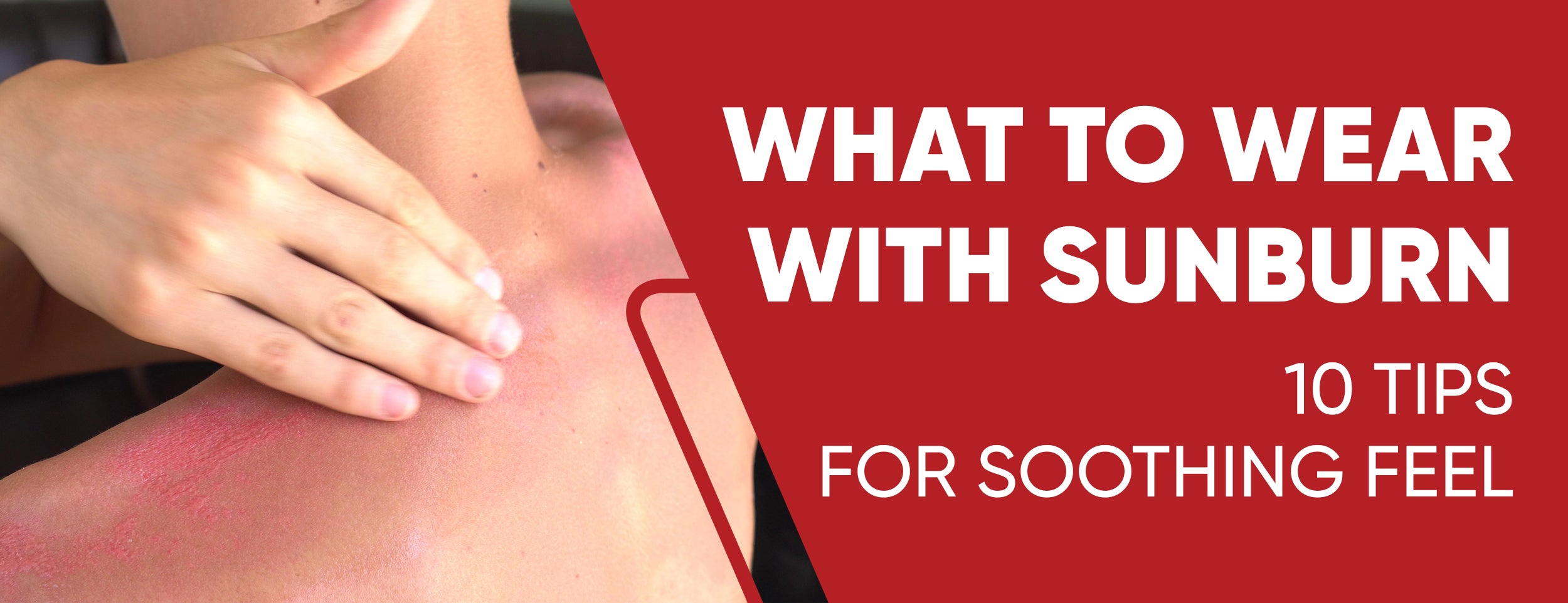One of the most common and uncomfortable effects of prolonged sun exposure is peeling sunburn. Not only does peeling skin look unsightly, but it can also cause considerable pain and itchiness, leaving you desperate for relief.
The good news is that there are numerous effective ways to address this issue and safeguard your skin from further harm. From aloe vera and moisturizers to anti-inflammatory medications, various treatments can help alleviate peeling skin, particularly after a sunburn.
In this article, we will discuss the causes, prevention, and treatment of peeling sunburn, as well as some special considerations for brown skin and raw, peeling sunburn.
Peeling Sunburn Treatment: 3 Ways

If you get sunburned and experience peeling skin, some treatments can help soothe your skin and promote healing. These include:
Hydrating and Moisturizing the Skin
Hydrating and moisturizing the skin can help restore the skin’s moisture balance and prevent further peeling. You can hydrate and moisturize your skin by:
- Drinking plenty of fluids, such as water, juice, or sports drinks, to replenish the fluids lost from your skin and prevent dehydration.
- Applying a gentle moisturizer to your skin after bathing or showering while your skin is still damp. Choose a moisturizer that is fragrance-free, alcohol-free, and hypoallergenic. Avoid products that contain retinoids, alpha-hydroxy acids, or salicylic acid, as they can irritate your skin.
- Reapplying moisturizer throughout the day as needed to keep your skin hydrated and soft
The use of Aloe Vera and Natural Remedies
Aloe vera and natural remedies can help soothe and heal skin after sunburn. Aloe vera is a plant that contains a gel-like substance that has anti-inflammatory, antibacterial, and moisturizing properties. You can use aloe vera by:
- Applying pure aloe vera gel directly to your sunburned skin. You can use fresh aloe vera from the plant or buy a commercial product that contains at least 95% aloe vera.
- Reapplying aloe vera gel as often as needed to relieve your symptoms
- Storing aloe vera gel in the refrigerator for extra cooling effect
Natural remedies are substances derived from plants or animals with healing properties. Some natural remedies that can help with peeling sunburn are:
- Honey: Honey has antibacterial, anti-inflammatory, and wound-healing properties. You can apply honey to your sunburned skin as a thin layer and leave it on for 15 to 30 minutes before rinsing it with cool water.
- Oatmeal: Oatmeal has soothing, anti-inflammatory, and moisturizing properties. For an oatmeal bath, add one cup of finely ground oatmeal to lukewarm water in a tub and soak for 15-20 minutes. Alternatively, mix an oatmeal paste with water and apply to sunburned skin for 10-15 minutes, then rinse with cool water.
- Yogurt: Yogurt has cooling, anti-inflammatory, and probiotic properties. You can apply plain yogurt as a thin layer on sunburned skin and leave it on for 10 to 15 minutes before rinsing it off with cool water.
Cooling Skin with Cold Compresses or Soothing Baths
Cold compresses and soothing baths can help reduce sunburned skin's heat, pain, and inflammation. You can cool your skin by:
- Applying cold compresses to your sunburned skin for 10 to 15 minutes. You can make cold compresses by soaking a cloth in cold water or wrapping ice cubes in a towel. Avoid applying ice directly to your skin, as it can cause frostbite.
- Take soothing baths with lukewarm water and add ingredients that calm your skin, such as baking soda, apple cider vinegar, chamomile tea, lavender oil, or milk. Avoid using hot water, soap, bubble bath, or bath salts, as they can dry out or irritate your skin.
Over-the-Counter Products to Promote Healing

You can buy over-the-counter products without a prescription from a doctor or pharmacist. Some over-the-counter products for peeling sunburn include:
- Pain relievers: Pain relievers help reduce sunburn discomfort. Take ibuprofen or acetaminophen as directed. Avoid aspirin to prevent bleeding or bruising. Consult your doctor for any medical conditions or allergies.
- Anti-inflammatory creams or gels: Use anti-inflammatory creams or gels to reduce sunburn inflammation and swelling. Avoid benzocaine, lidocaine, or other numbing agents, as they can cause allergic reactions or worsen the damage. Before using these creams or gels, consult your doctor for medical conditions or allergies.
- Antihistamines: Antihistamines alleviate itching and allergic reactions caused by sunburned skin. You can take antihistamines like diphenhydramine or cetirizine as directed on the label. It's important to note that certain antihistamines may induce drowsiness, so refrain from driving or operating machinery after consumption. If you have any medical conditions or allergies, consult your doctor before using antihistamines.

Special Considerations for Peeling Sunburn on Brown Skin
Brown skin is a term that refers to skin tones that range from light brown to dark brown and includes people of African, Asian, Hispanic, Native American, Middle Eastern, and mixed-race descent. Brown skin has more melanin, a pigment that gives color to the skin and protects it from UV radiation. However, brown skin is not immune to sunburn and peeling and may face some unique challenges and considerations.
Unique Challenges and Considerations for Brown Skin
Some of the special challenges brown-skinned people face are:
- Brown skin may not show signs of sunburn as clearly as lighter skin, such as redness or blisters. This can make it harder to detect and treat sunburn in time.
- Brown skin may be more prone to hyperpigmentation, a condition where the skin produces excess melanin and becomes darker than normal. This can result in uneven skin tone, dark spots, or patches on the sunburned areas.
- Skin with brown pigment may be more prone to keloids, which are raised scars that form over the healed wounds. This can result in thick, hard, and shiny bumps on the sunburned areas.
- Brown skin may have different needs and preferences for sunscreen and moisturizer products than lighter skin. For example, some sunscreen products may leave a white cast or residue on brown skin, making it look ashy or chalky. Some moisturizer products may be too greasy or heavy for brown skin, clogging the pores and causing breakouts.
Appropriate Treatment Options for Brown Skin

Some of the most appropriate treatments for brown skin are:
- Use sunscreen products for brown skin or have a sheer or tinted formula that blends well with the skin tone. Look for sunscreen products with at least 30 SPF, provide broad-spectrum protection, are water-resistant, and are appropriate for your skin type and preferences.
- Use moisturizer products designed specifically for brown skin or with a light or gel-like texture that hydrates without being oily or sticky. Look for moisturizer products that are fragrance-free, alcohol-free, hypoallergenic, and contain ingredients that can help fade hyperpigmentation, such as vitamin C, niacinamide, licorice extract, or kojic acid.
- Using natural remedies that are gentle and effective for brown skin, such as aloe vera gel, honey, oatmeal, yogurt, cucumber, green tea, turmeric, or lemon juice. These remedies can help soothe, heal, moisturize, and brighten the sunburned skin.
- Consult a dermatologist if you experience severe sunburn peeling on brown skin, especially if there are signs of infection, blistering, bleeding, keloids, or severe hyperpigmentation. A dermatologist can prescribe medications or perform procedures that can help treat these complications.
Importance of Proper Aftercare and Moisturization
Proper aftercare and moisturization are important in peeling sunburns on brown skin because they can help prevent further damage and promote healing. Some of the tips for proper aftercare and moisturization are:
- Avoid manually picking at or peeling off the peeling skin, as this can cause infection, scarring, or hyperpigmentation. Let the peeling skin fall off naturally.
- Avoid exposing the sunburned areas to direct sunlight until they heal completely. Wear protective clothing and sunscreen when going out in the sun.
- Avoid using harsh or abrasive products on the sunburned areas until they heal completely. Use gentle cleansers and exfoliators that suit your skin type and preferences.
- Apply moisturizer to the sunburned areas at least twice daily or as often as needed to keep them hydrated and soft. Use moisturizer products suitable for your skin type.
- Apply sunscreen to the sunburned areas daily, even if they are not exposed to the sun. Use sunscreen according to your skin type and preferences.
Seeking Professional Help for Severe Cases
Professional help in cases of severe peeling sunburn on brown skin is advisable because it can help prevent serious complications and improve the appearance of the skin. Some of the reasons to seek professional help are:
- If the sunburn covers a large area of your body or affects sensitive areas such as your face, eyes, ears, or genitals.
- If the sunburn causes severe pain, swelling, blistering, bleeding, or pus.
- If the sunburn causes signs of infection, such as fever, chills, headache, nausea, or vomiting.
- A sunburn may cause signs of dehydration, such as thirst, dry mouth, dizziness, or fainting.
- There are signs of heat exhaustion or heat stroke, such as confusion, rapid heartbeat, shallow breathing, or loss of consciousness.
- A sunburn can cause keloids, such as raised, hard, shiny bumps that grow beyond the original wound.
- A sunburn that results in severe hyperpigmentation, such as dark spots or patches that do not fade over time.
A dermatologist can diagnose and treat these conditions and prescribe medications or perform procedures to help heal your skin and improve its appearance.
Raw Peeling Sunburn Treatment

Raw, peeling sunburn causes the top layer of the skin to peel off and expose the underlying layer of skin that is raw and tender. Raw, peeling sunburn is usually a result of severe sunburn that damages the deeper layers of the skin. Raw, peeling sunburn can be excruciating and increase the risk of infection and scarring.
Raw Peeling Sunburn: An Overview
Raw, peeling sunburn is a sign of second-degree sunburn, a more serious form than first-degree sunburn. Second-degree sunburn affects the epidermis (the outer layer of the skin) and the dermis (the inner layer of the skin). It causes damage to the nerve endings, blood vessels, sweat glands, hair follicles, and collagen fibers. Second-degree sunburn can cause symptoms such as:
- Redness.
- Swelling.
- Pain.
- Blisters.
- Peeling.
- Rawness.
- Sensitivity.
- Itching.
Raw, peeling sunburn can take longer to heal than first-degree sunburn and may require medical attention.

Preventing Infection and Promoting Healing
Preventing infection and promoting healing is essential for treating raw, peeling sunburns because they can help prevent complications and improve recovery. Some of the steps for preventing infection and promoting healing are:
- Cleanse the affected area gently with mild soap and water or saline solution. Pat it dry with a clean towel or gauze.
- Apply an antibiotic ointment or cream to the affected area to promote healing and prevent infection. Choose a product free of fragrance, alcohol, and allergens. You might experience side effects or worsen the damage if you use benzocaine or lidocaine.
- Cover the affected area with a sterile dressing or bandage to protect it from dirt and bacteria. Change the dressing or bandage daily or whenever it becomes wet or dirty.
- Elevate the affected area above your heart level to reduce swelling and pain.
- Avoid touching or scratching the affected area to prevent further irritation or infection.
Topical Antibiotic Treatments
Topical antibiotic treatments are products that contain antibiotics that can kill bacteria and prevent infection on the skin. Topical antibiotic treatments can help treat raw, peeling sunburn by reducing the risk of infection and promoting healing. Some examples of topical antibiotic treatments are:
- Bacitracin: Bacitracin is an antibiotic that can kill many bacteria that cause skin infections. As the label directs, you can apply bacitracin cream to raw, peeling sunburns.
- Neomycin: Neomycin works by killing some bacteria that cause skin infections. You can apply neomycin cream or ointment as directed on the label.
- Polymyxin B: Polymyxin B can kill certain bacteria that cause skin infections. You can apply polymyxin B cream or ointment to your raw, peeling sunburn as directed on the label.
Some topical antibiotic treatments may contain a combination of these or other ingredients that can help soothe and heal your skin. For example:
- Neosporin: Neosporin is a product that contains bacitracin, neomycin, and polymyxin B. The label instructs you to apply Neosporin ointment or cream to your raw, peeling sunburn.
- Bactroban: Bactroban is a product that contains mupirocin, which kills some types of bacteria responsible for skin infections. You can apply Bactroban ointment or cream to a raw and peeling sunburn.
You can buy these topical antibiotic treatments over the counter at most pharmacies or online. Before using these products, discuss any medical conditions or allergies with your doctor. You should also stop using them and seek medical attention if you experience any side effects, such as rash, itching, swelling, or difficulty breathing.
Peeling Sunburn: Other Factors

Sunburn peeling is a natural process whereby damaged skin cells slough off, making way for fresh, new ones. While this shedding can be uncomfortable and visually unappealing, it also poses risks of infection and scarring. Let's delve into the causes of peeling sunburn, the common areas affected, and why it is problematic.
What Causes Peeling Sunburn?
Peeling of sunburn occurs when UV radiation damages the DNA of skin cells. This triggers an immune response, resulting in inflammation, increased blood flow, and the release of chemicals that cause pain and itching.
The damaged cells, in turn, produce enzymes that break down their connections, leading to detachment and eventual peeling. Typically, this peeling process commences a few days after sun exposure and persists for up to two weeks.
Why is Sunburn Peeling Considered a Problem?
Peeling sunburn poses multiple concerns. Firstly, it can result in cosmetic issues, manifesting as flaky, dry, and uneven skin. Secondly, it leads to physical discomfort, as the peeling skin becomes itchy, tight, and sensitive. Thirdly, it heightens the risk of infection, exposing the underlying skin to harmful bacteria and pathogens.
It impairs the skin's barrier function, diminishing its ability to retain moisture and safeguard against environmental factors. Lastly, peeling skin may indicate cumulative damage to skin cells, potentially resulting in long-term consequences like premature aging and even skin cancer.
Common Areas Affected by Peeling Sunburn
Exposure to UV radiation can lead to peeling sunburn, affecting various body parts. Certain areas are particularly prone to this, including the face (especially the nose, cheeks, forehead, and lips), ears, neck, chest, shoulders, back, arms, hands, legs, and feet.
These areas have thinner, more sensitive skin prone to UV damage. They may lack natural oils or moisture that prevent peeling. They often need to be paid more attention when applying sunscreen or other sun protection measures.
Sunburn Peeling Prevention

Preventing peeling sunburn is best achieved by avoiding sunburn altogether. This can be accomplished by adhering to a few straightforward guidelines:
Importance of Sunscreen and Sun Protective Measures
Sunscreen contains ingredients that block or absorb UV radiation to protect the skin from sunburn, skin cancer, and premature aging. Apply generously and even amounts to all exposed skin 15 minutes before sun exposure. Reapply every two hours or more frequently during sweating or swimming.
Sun protection measures are actions to minimize exposure to UV radiation from the sun or other sources. These actions encompass:
- Donning clothing that covers most of the body, such as long-sleeved shirts, pants, hats, and sunglasses.
- Seeking shade whenever possible, particularly between 10 a.m. and 4 p.m., when the sun is strongest.
- Refraining from using tanning beds or lamps that emit artificial UV radiation.
- Checking the UV index before sun exposure and taking extra precautions when it is high.
How to Choose the Right Sunscreen and SPF?
Sunscreen comes in different forms, such as creams, lotions, sprays, gels, sticks, or wipes. It also comes in different levels of sun protection factor (SPF), which indicates how well it protects against UVB radiation that causes sunburn. SPF ranges from 2 to 100 or higher.
The American Academy of Dermatology recommends using a sunscreen that:
- Has an SPF of at least 30.
- Provides broad-spectrum protection against both UVA and UVB radiation.
- Is water-resistant for up to 40 or 80 minutes.
- Is it suitable for your skin type and preference.

Effective Sunscreen Application
To apply sunscreen effectively:
- Use enough sunscreen to cover all exposed areas of your body. A general rule is to use about one ounce (a shot glass) of sunscreen for your entire body.
- Apply sunscreen evenly and thoroughly to every exposed part of your body. Don’t forget areas such as your ears, lips, neck, hands, feet, and scalp.
- Apply sunscreen at least 15 minutes before going out in the sun to allow it to absorb into your skin.
- Reapply sunscreen every two hours or more often if sweating or swimming. Even water-resistant sunscreen can wear off after prolonged exposure to water or sweat.
- Use sunscreen with other sun protective measures, such as clothing, shade, and sunglasses. No sunscreen can block 100% of the UV radiation.
Seeking Shade and Limiting Sun Exposure
Sun protection and shade help reduce the amount of UV radiation that reaches your skin. You can seek shade by:
- Using an umbrella, a canopy, a tent, or a tree.
- Staying indoors or under a roof.
- Choosing a shady spot when outdoors.
You can limit sun exposure by:
- Avoid the sun during peak hours (10 a.m. - 4 p.m.) when its rays are strongest.
- Planning your outdoor activities for early morning or late afternoon when the sun is lower in the sky
- Checking the UV index before going outside when it is high and taking extra precautions
Conclusion
Peeling sunburn occurs when the skin is exposed to excessive UV radiation, leading to the shedding of damaged cells and subsequent replacement. Preventing sunburn in the first place, and using sunscreen and protective measures, can help avoid peeling sunburn.
Hydrating, moisturizing, and using aloe vera and cold compresses can treat peeling sunburn. Special considerations are necessary for brown skin, including suitable products and medical attention if the condition is severe. Raw, peeling sunburn requires medical attention to prevent infection.
Protecting the skin can prevent long-term consequences such as premature aging, skin cancer, and scarring. Following prevention and treatment measures, you can enjoy the sun without harming your skin.













![How to Cover Sunburn With Makeup: 15 Ideas [Easy Solutions]](http://drnumb.com/cdn/shop/articles/How_to_Cover_Sunburn_With_Makeup__15_Ideas_Easy_Solutions.jpg?v=1705581434)

